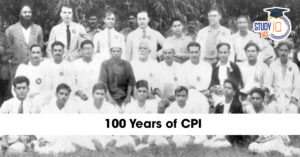Table of Contents
Introduction
Mysuru is a city in Karnataka, India, with a population of over 1.2 million people. The city is a major tourist destination, and is also home to a number of educational institutions. In recent years, Mysuru has experienced rapid growth in traffic congestion, pollution levels, and travel time delays. The growing traffic congestion and pollution levels in Mysuru were a major concern for the city government. The government also wanted to improve the efficiency of the public transportation system.
The Initiative
- In 2012, the Karnataka State Road Transport Corporation (KSRTC) launched an ITS in Mysuru.
- The ITS uses a variety of technologies, including GPS, GPRS, and digital display units, to provide real-time information about bus arrival and departure times, bus locations, and traffic conditions.
- The ITS also provides information about bus fares and routes.
Benefits
- Reduced traffic congestion: The ITS has helped to reduce traffic congestion by providing real-time information to commuters about bus arrival and departure times. This has made it easier for commuters to plan their trips, and has reduced the number of people driving private vehicles.
- Reduced pollution levels: The ITS has also helped to reduce pollution levels by encouraging people to use public transportation instead of private vehicles.
- Improved safety: The ITS has improved safety by providing real-time information about bus locations. This has made it easier for pedestrians and cyclists to cross the road safely.
- Increased commuter satisfaction: The ITS has increased commuter satisfaction by providing real-time information about bus services. This has made it easier for commuters to plan their trips, and has reduced the amount of time they spend waiting for buses.
Impact
- 28 crew members and seven buses saved from auto scheduling; utilization of buses increased from 247.5 km. to 251.7 km.;
- Crew utilization increased from 66.3 km./employee to 68.2 km./employee;
- Total savings of 55 operational hours and 26.55 operational time hours; 1,555 non-earning km. of the running time of buses cut down; 2000 km. augmented daily which fetches an average earning of ₹30 per km.
Conclusion
The ITS in Mysuru is a successful example of how technology can be used to improve urban public transportation. The ITS has brought a number of benefits to the city, including reduced traffic congestion, pollution levels, and travel time delays. The KSRTC plans to further develop the ITS to make it even more beneficial to the citizens of Mysuru.


 100 Years of CPI: Origins, Ideology, Fre...
100 Years of CPI: Origins, Ideology, Fre...
 Santhali Language: History, Script, Cons...
Santhali Language: History, Script, Cons...
 How African Reserves Eliminated Rhino Po...
How African Reserves Eliminated Rhino Po...

























